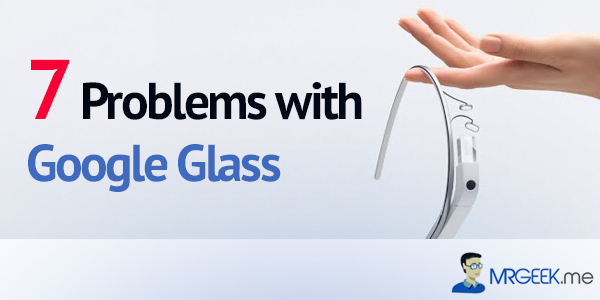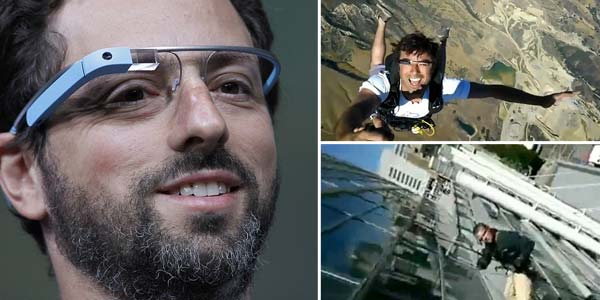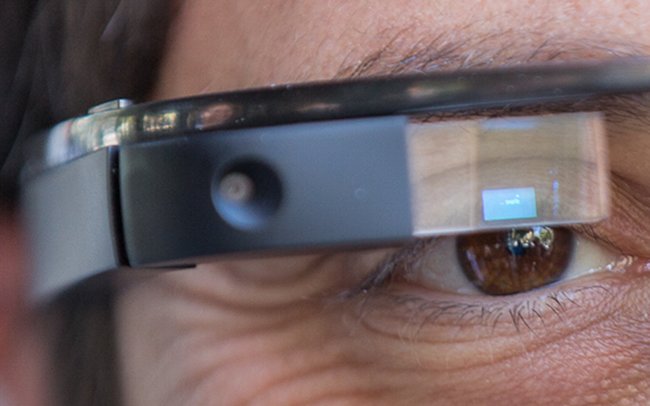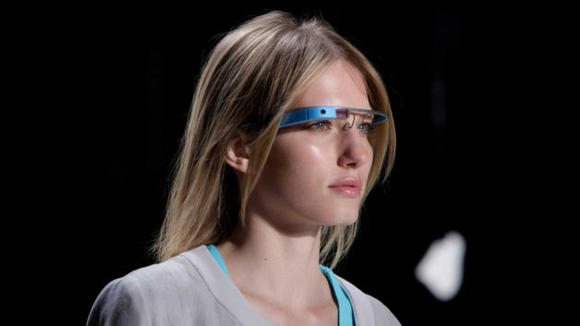Two weeks ago, Google uploaded their latest YouTube video showing the highly anticipated Google Glass in action. The video shows Google Glass’ interface which appears in the wearer’s line of sight. As of now, the wearable computer (Google Glass) is only available for developers and “creative individuals”, for which they’ll have to pay a whooping price of $1500.
With the recent development of Pebble Watch, Oakley Airwave and Google Glass, we have been ushered into an era of wearable computing. This is a fact. Perhaps the greatest proponent of the wearable computing movement now is Sergey Brin, the man behind Project Glass, the division responsible for the development of Google Glass. But no matter how great Google Glass might appears to be, it does come with its fair share of problems. Here, we are going to highlight 7 key problems with Google Glass.
1. Safety Issues
Google Glass is an Augmented Reality technology, which means, it puts the worlds’ information right in front of your eyes. Imagine reading your text message while you are sprinting your way to the next bus stop, all on a see-through screen. Google Glass is a world changing technology, but safety experts think otherwise. For example, road safety experts believe that the Google Glass can be a major source of visual and mental distraction. This brings lethal consequences, like bumping into pedestrians or stepping in front of a speeding car, because the wearer was concentrating on the glass display rather than where they were walking. Now imagine what will happen while driving wearing Google Glass for the wearer and the life and property around him/her? Bang!
2. Health Issues
Staring on a computer screen for too long means bad news for your eyes. With Google Glass, the problem of eye strain or headaches can be aggravated further. For example, the rectus (eye muscles) will develop problems with the prolonged usage of Google Glass. In addition to eye fatigue, one Harvard scientist believe that, Google Glass carries a risk of visual confusion. This is because the brain hates seeing two different images in two different eyes at the same time, and can cause problems like phoria (binocular rivalry) . This confusion of the brain may cause serious minor and major accidents.
The other serious issue is Ocular dominance which is also called eyedness ( Left/Right eye dominance). The nature has designed our eyes in a way to make one eye dominant over the other to resolve micro or macro focus issues of our eyes to its optimum to give us the best vision. Around 33% of the population is left eye dominant and rest is right eye dominant with negligeable non-dominant portion. Therefore, Google Glass is likely to cause serious issues to left eye dominant population, because it is designed to project image to right eye.
Moreover, the issue of Ocular dominance will pervasively effect those who have myopic vision or have compound vision problems. If this is ignored, the user can experience aggravated visual and brain problems including migrane and strabismus. Medical scientists believe that these issues will further precipitate at the repeating act of looking up on the Google Glass screen more often and can also be very discomforting. The question is whether FDA’s approval will be required to ensure that the population is not at health risk?
3. Privacy Issues
Google Glass is definitely a great leap forward towards augmenting reality, but one of its most pervasive problems is privacy, and it will take more than mere algorithms to solve. Google Glass gives anyone the ability to record and take pictures without you knowing about it. Therefore, it won’t be welcomed when Google Glass rolls out to the masses specially in conservative societies of second and third world. Oh and with Google Glass in their arsenal, paparazzi can easily record videos and take pictures of celebrities with the greatest of ease and comfort. Apparently, the solution for solving the privacy problem doesn’t lie in a smart Google algorithm.
4. Technology Issues
At the moment, Google Glass has two input mechanisms, voice control and an input pad on the right side. Besides this, there is no way to input textual information right into the device, but reports hint that smartphones could be soon used for input via Bluetooth. The problem with voice control is accuracy. Voice control doesn’t work very well with a non-American accents. For example resolving a Chinese accent could be a problem. In general, it can be safely said that voice control has failed as a primary method of input and the technology needs further development before its ripe for everyday use.
The current prototype version of Google Glass lacks a cellular antenna – which means the device only has a bluetooth and a Wi-fi radio. Without a cellular antenna, Google Glass could hit snags. Google expects cities to have a wireless hotstop all across, and that too free (not always). However, if you have a smartphone (and if Google Glass supports external devices), you can create a wireless hotspot using bluetooth or wi-fi anyway, but then Google Glass should still have a cellular antenna so it could work independently.
From a communication point of view, Google Glass is fabulous, allowing you to join a Google Hangout while you’re on the move. But is it an entertainment device? No. Google Glass isn’t good enough for hangouts or watching videos because that requires both eyes to focus on the object whereas Google Glass is only capable of serving only one eye and not both.
5. Social Issues
In this era, where we are surrounded by machines, gadgets, computers, smartphones etc., we as human beings have become surrogates. We are heavily reliant on machines, in our daily lives, even for minor tasks of taking notes or doing simple arithmetic.
Google Glass poses serious social problems for the users. Imagine a street of New York, London, Paris and Tokyo (the most likely places for Google Glass buyers) where most of the people are roaming around wearing Google Glasses, murmuring “OK Glass”. What comes to your mind? A scene from the movie iRobot (2004, starring Will Smith), or a cyborg. Do you think it will be a pleasing sight seeing a mass of people functioning like robots, talking with themselves or a machine?
Now Imagine a person sitting in a tube , train, bus wearing Google glass and every minute or so issuing voice commands. How will it effect the quality of life of other fellow commuters? It will surely cause nuisance and disturbance, in addition to making himself a mockery in the eyes of fellow observers seeing him/ her talking with himself/herself or a machine. This issue of self talking, rather then engaging in fruitful social interaction, leads us to a more serious issue of failing human interaction.
Now when Google Glass rolls out in near future, this problem of reliance on machines will further increase. We understand that the emotions and facial expressions are key to a healthy lifestyle and social interaction. Therefore, the advent of the Google Glass is a serious threat to this social balance.
6. Cosmetic Issues
Google Glass does look trendy, much to the delight of geeks and nerds, but may not for the common user. Since Google Glass is a wearable thing, it is not like a smartphone which you can hide and use as and when required. The major cosmetic issues with Google Glass is its design. Therefore, Google Glass has to meet the personal liking/standards of the wearer. But is it possible for Google to design a frame for each individual? No it is not. Until Google teams up with major eyewear designer brands to penetrate the market. But if Google does it, would it maintain the unique selling point of their product and still be able to make its product technologically viable?
The answers to the above questions remains to be found. As of now, Google Glass poses serious design issues for users visa-a-vis gender, age, location, weather, weight etc.
7. Price
Google Glass is currently available for developers and “creative individuals” at $1500. That is nearly twice as expensive than the best smartphone in the market. Barring geeks and nerds, it would be hard for Google Glass to appeal to the common technology consumer, who would think twice before paying $1500 for a wearable computer that can’t even make calls (more on this later). Google Glass should be sold at a lower price point in the future, cheaper than smartphones.
Conclusion
Google Glass is unarguably a promising technological achievement by Google with its inherent pitfalls, ranging from safety issues to cosmetics. Google needs to look into these above issues to make a product that is safe, healthy, social acceptable and not heavy on wallet.
About Ali Gajani
Hi. I am Ali Gajani. I started Mr. Geek in early 2012 as a result of my growing enthusiasm and passion for technology. I love sharing my knowledge and helping out the community by creating useful, engaging and compelling content. If you want to write for Mr. Geek, just PM me on my Facebook profile.






















